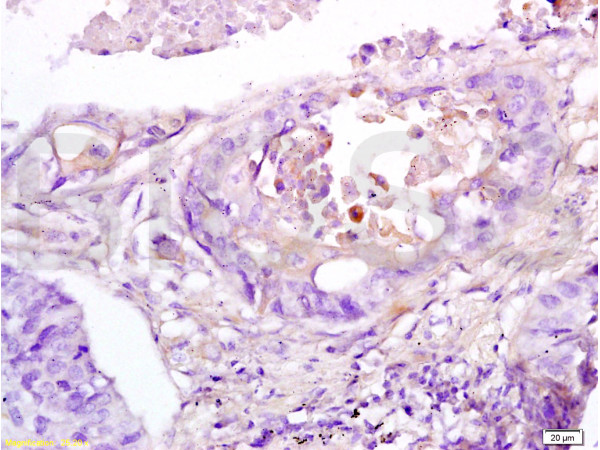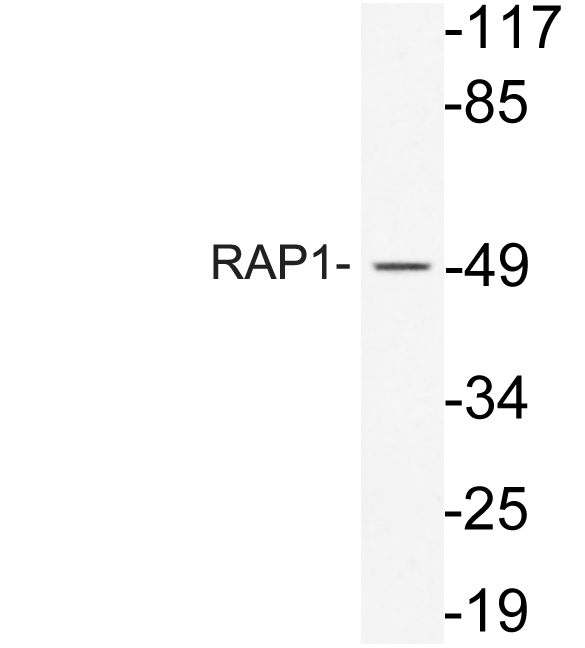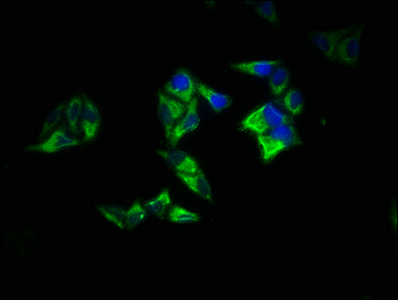![IHC-P analysis of human kidney tissue using GTX31146 Rap1 antibody [1D2-1C64]. Right : Primary antibody Left : Negative control without primary antibody Antigen retrieval : 10mM sodium citrate (pH 6.0), microwaved for 8-15 min Dilution : 1:200 IHC-P analysis of human kidney tissue using GTX31146 Rap1 antibody [1D2-1C64]. Right : Primary antibody Left : Negative control without primary antibody Antigen retrieval : 10mM sodium citrate (pH 6.0), microwaved for 8-15 min Dilution : 1:200](https://www.genetex.com/upload/website/prouct_img/normal/GTX31146/GTX31146_1345_IHC-P_w_23060722_488.webp)
IHC-P analysis of human kidney tissue using GTX31146 Rap1 antibody [1D2-1C64]. Right : Primary antibody Left : Negative control without primary antibody Antigen retrieval : 10mM sodium citrate (pH 6.0), microwaved for 8-15 min Dilution : 1:200
Rap1 antibody [1D2-1C64]
GTX31146
ApplicationsImmunoFluorescence, ImmunoPrecipitation, Western Blot, ImmunoCytoChemistry, ImmunoHistoChemistry, ImmunoHistoChemistry Paraffin
Product group Antibodies
TargetRAP1A
Overview
- SupplierGeneTex
- Product NameRap1 antibody [1D2-1C64]
- Delivery Days Customer9
- Application Supplier NoteWB: 1:500 - 1:1000. ICC/IF: 1:10-1:200. IHC-P: 1:100-1:1000. IP: 2 microg. *Optimal dilutions/concentrations should be determined by the researcher.Not tested in other applications.
- ApplicationsImmunoFluorescence, ImmunoPrecipitation, Western Blot, ImmunoCytoChemistry, ImmunoHistoChemistry, ImmunoHistoChemistry Paraffin
- CertificationResearch Use Only
- ClonalityMonoclonal
- Clone ID1D2-1C64
- Concentration1 mg/ml
- ConjugateUnconjugated
- Gene ID5906
- Target nameRAP1A
- Target descriptionRAP1A, member of RAS oncogene family
- Target synonymsC21KG; G-22K; GTP-binding protein smg p21A; KREV1; KREV-1; RAP1; Ras-related protein Krev-1; ras-related protein Rap-1A; SMGP21
- HostMouse
- IsotypeIgG2a
- Protein IDP62834
- Protein NameRas-related protein Rap-1A
- Scientific DescriptionThis gene encodes a member of the Ras family of small GTPases. The encoded protein undergoes a change in conformational state and activity, depending on whether it is bound to GTP or GDP. This protein is activated by several types of guanine nucleotide exchange factors (GEFs), and inactivated by two groups of GTPase-activating proteins (GAPs). The activation status of the encoded protein is therefore affected by the balance of intracellular levels of GEFs and GAPs. The encoded protein regulates signaling pathways that affect cell proliferation and adhesion, and may play a role in tumor malignancy. Pseudogenes of this gene have been defined on chromosomes 14 and 17. Alternative splicing results in multiple transcript variants. [provided by RefSeq, May 2014]
- Storage Instruction-20°C or -80°C,2°C to 8°C
- UNSPSC12352203

![IP analysis of NIH3T3 cell lysates using GTX31146 Rap1 antibody [1D2-1C64]. IP reaction : 2microg antibody / 750microg lysate Dilution : 1:500 IP analysis of NIH3T3 cell lysates using GTX31146 Rap1 antibody [1D2-1C64]. IP reaction : 2microg antibody / 750microg lysate Dilution : 1:500](https://www.genetex.com/upload/website/prouct_img/normal/GTX31146/GTX31146_1452_IP_w_23060722_403.webp)
![WB analysis of 25 microg of various whole cell lysates per well using GTX31146 Rap1 antibody [1D2-1C64]. Dilution : 1:500 WB analysis of 25 microg of various whole cell lysates per well using GTX31146 Rap1 antibody [1D2-1C64]. Dilution : 1:500](https://www.genetex.com/upload/website/prouct_img/normal/GTX31146/GTX31146_1854_WB_w_23060722_951.webp)
![ICC/IF analysis of HeLa cells using GTX31146 Rap1 antibody [1D2-1C64]. Fixation : Formalin Permeabilization : 0.1% Triton X-100 in TBS for 10 minutes Dilution : 1:100 for at least 1 hour at room temperature ICC/IF analysis of HeLa cells using GTX31146 Rap1 antibody [1D2-1C64]. Fixation : Formalin Permeabilization : 0.1% Triton X-100 in TBS for 10 minutes Dilution : 1:100 for at least 1 hour at room temperature](https://www.genetex.com/upload/website/prouct_img/normal/GTX31146/GTX31146_761_ICC-IF_w_23060722_502.webp)
![ICC/IF analysis of C2C12 cells using GTX31146 Rap1 antibody [1D2-1C64]. Cells were probed without (left) or with(right) an antibody. Green : Primary antibody Blue : Nuclei Red : Actin Fixation : Formalin Permeabilization : 0.1% Triton X-100 in TBS for 5-10 minute Dilution : 1:20 overnight at 4oC ICC/IF analysis of C2C12 cells using GTX31146 Rap1 antibody [1D2-1C64]. Cells were probed without (left) or with(right) an antibody. Green : Primary antibody Blue : Nuclei Red : Actin Fixation : Formalin Permeabilization : 0.1% Triton X-100 in TBS for 5-10 minute Dilution : 1:20 overnight at 4oC](https://www.genetex.com/upload/website/prouct_img/normal/GTX31146/GTX31146_762_ICC-IF_w_23060722_853.webp)





